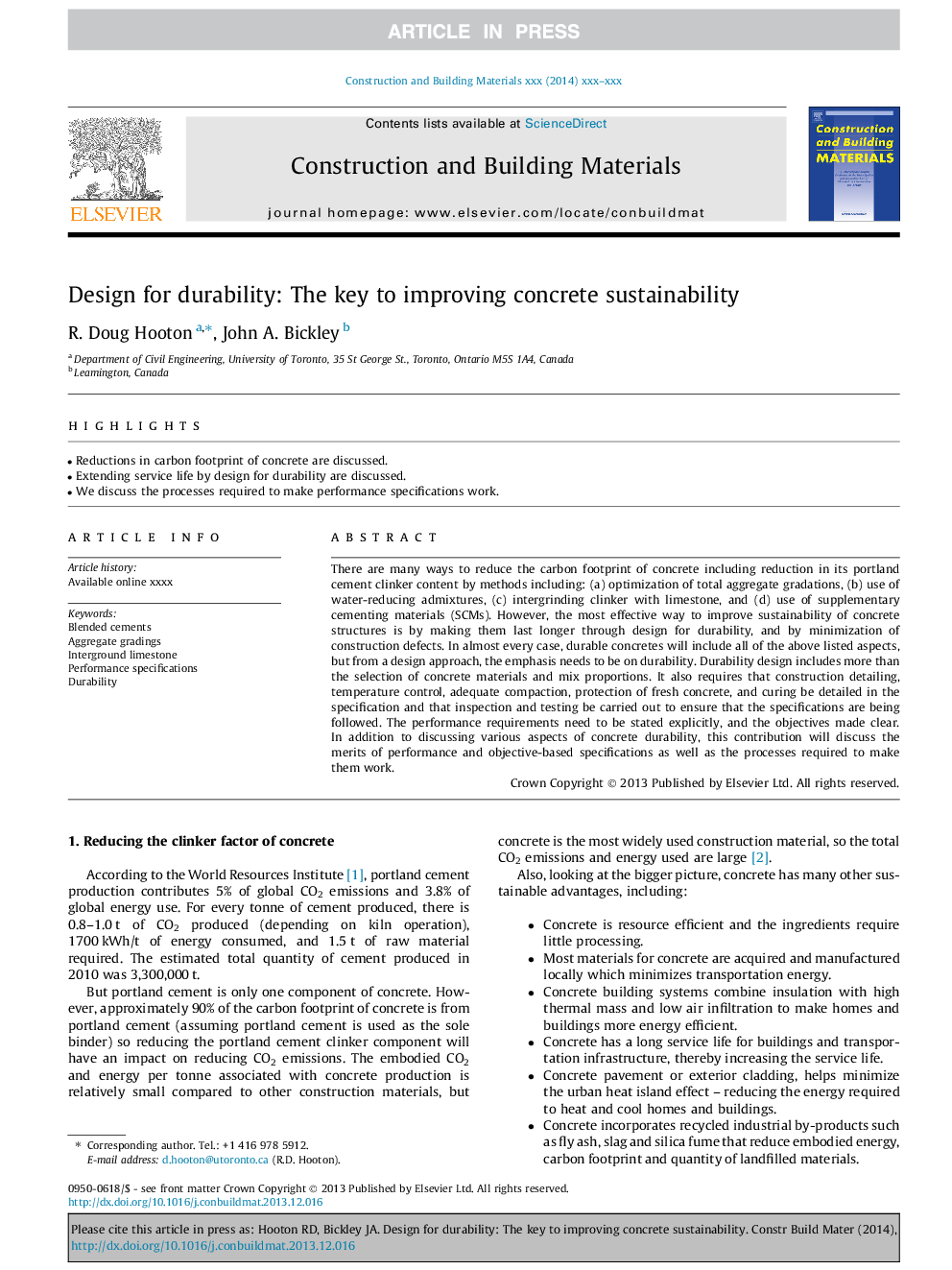| Article ID | Journal | Published Year | Pages | File Type |
|---|---|---|---|---|
| 10285163 | Construction and Building Materials | 2014 | 9 Pages |
Abstract
There are many ways to reduce the carbon footprint of concrete including reduction in its portland cement clinker content by methods including: (a) optimization of total aggregate gradations, (b) use of water-reducing admixtures, (c) intergrinding clinker with limestone, and (d) use of supplementary cementing materials (SCMs). However, the most effective way to improve sustainability of concrete structures is by making them last longer through design for durability, and by minimization of construction defects. In almost every case, durable concretes will include all of the above listed aspects, but from a design approach, the emphasis needs to be on durability. Durability design includes more than the selection of concrete materials and mix proportions. It also requires that construction detailing, temperature control, adequate compaction, protection of fresh concrete, and curing be detailed in the specification and that inspection and testing be carried out to ensure that the specifications are being followed. The performance requirements need to be stated explicitly, and the objectives made clear. In addition to discussing various aspects of concrete durability, this contribution will discuss the merits of performance and objective-based specifications as well as the processes required to make them work.
Related Topics
Physical Sciences and Engineering
Engineering
Civil and Structural Engineering
Authors
R. Doug Hooton, John A. Bickley,
